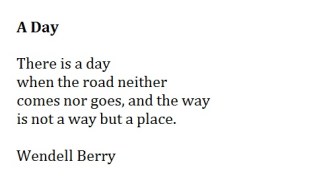
Rarely does one have the opportunity to create a new edition of a book many in our movement have grown up with: B’chol L’vavcha: With All Your Heart: A Commentary on the Prayer Book, the beloved magnum opus of Rabbi Harvey J. Fields, z’’l, who was a rabbi, teacher, and friend to many Reform rabbis, cantors, and congregants alike. His warm, clear, and accessible writing provided introductions to and meditations on the major prayers of the previous Reform siddur, Gates of Prayer, for adults, teens, and children—equally useful in adult education, bar and bat mitzvah preparation, and religious school.
And it still does. However, the third edition of B’chol L’vavcha, just released by CCAR Press, adds new layers of learning and teaching to the familiar book. Many female and queer rabbis and teachers have found their way onto the pages as commentators; the book itself is the product of the labors of one Reform cantor, Sarah Grabiner, and two Reform rabbis, Hilly Haber and myself. Many contemporary poems and prayers have been added to bring diversity, new depths, new meanings, and new Torah to the familiar liturgy. Newly added sections—Kiddush and Havdalah—reflect today’s reality in which we, as Reform Jews, do not pray only in our synagogues, but just as often in our homes, particularly during the past pandemic year. However, perhaps the most basic but also the most remarkable change is the shift from the language and layout of Gates of Prayer to the words and aesthetics of Mishkan T’filah, making the third edition the perfect companion for any teaching on prayer, including iyunei t’filah.

Let me give you two examples:
Accompanying the Sh’ma, you will find this prayerful version by Rabbi Emily Langowitz:
Sh’ma Listen.
Yisrael God-struggler.
Adonai Was-Is-WillBe
Eloheinu Is our God
Adonai Was-Is-WillBe
Echad Is One.
Listen, God-struggler. Was-Is-WillBe is a reflection of my own divinity. Was-Is-WillBe, the One who moves the universe, the One who knows that being can never be static, the One in whose image I am made, bears witness to my own unity.
I give thanks to that Spirit of life who allows for the continued revelation of self.
I marvel at the wonder of sexuality unfolding.
I lift up the truth of all the ways I have loved, do love, will love.
.בְּרוּכָה אַתְּ יָהּ, אַחְדוּת הָעוֹלָם, שֹֹֹֹּּּּוֹמַעַת הָאֱמֶת
B’ruchah at Yah, achdut ha-olam, shomaat ha-emet.
Blessed are You, Oneness of the world, who hears my Truth.[1]
And the book closes with a moving reflection by Rabbi Andrea Weiss, PhD, Provost at HUC-JIR:
Lech L’cha
Go forth on a journey.
Go by yourself.
Standing at a crossroad
You venture from the known to the unknown.
Some journeys must be made alone.
Go to yourself:
Spiral inward and unwrap your past
And your potential.
Remember that the soul which you have made
Is unique and holy.
Go for yourself:
Smell the fragrance
Which spread across the land
As you roam and wander.
Refresh yourself
Under the tree which grows by a spring
At the side of the road.
Make your name great and
Make your life a blessing.[2]
Go and have a look at this book, so that it can accompany you and your people on your journeys!
Rabbi Sonja K. Pilz, PhD, is the Editor at CCAR Press.
[1] Previously published in Mishkan Ga’avah: Where Pride Dwells , edited by Rabbi Denise Eger (New York: CCAR Press, 2019). Copyright © 2019 by Emily Langowitz.
[2] Previously published in The Torah: A Women’s Commentary (New York: CCAR Press and Women of Reform Judaism, 2008). Copyright © 2008 by Andrea Weiss.











 invest in their own copy. Many pre-purchased the book and we provided personalized bookplates. We had a number of copies for congregants to borrow and on Rosh HaShanah, all of the books had a card inside. I invited the congregation once again to purchase their own copy. I asked them to fill out the card that evening, give it to a greeter, and then take the book home. The next week, we had the Yom Kippur edition and
invest in their own copy. Many pre-purchased the book and we provided personalized bookplates. We had a number of copies for congregants to borrow and on Rosh HaShanah, all of the books had a card inside. I invited the congregation once again to purchase their own copy. I asked them to fill out the card that evening, give it to a greeter, and then take the book home. The next week, we had the Yom Kippur edition and 





